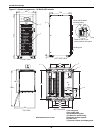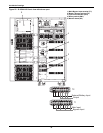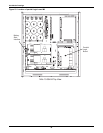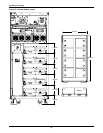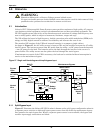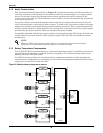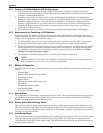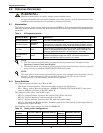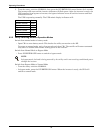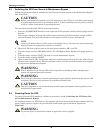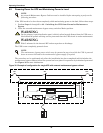
Operation
42
5.2.1 Features of NX Multi-Module UPS Configurations
1. The hardware and firmware of single module UPS units is completely compatible with the
requirements of a multi-module system. Multi-module configuration is achieved merely through
settings in configuration software.
2. Parallel control cables are connected in a ring, providing both performance and redundancy.
Dual-bus control cables are connected between any two UPS modules of each bus. The intelligent
paralleling logic provides the user with maximum flexibility. For example, shutting down or
starting up UPS modules in a parallel system can be done in any sequence. Transfers between
Normal and Bypass modes of operation are synchronised and self –recovering e.g. following
overloads and their clearance.
3. The total load of the multi-module system can be queried from each module’s LCD display.
5.2.2 Requirements for Paralleling of UPS Modules
A group of paralleled modules behave as if it were one large UPS with the advantage of presenting
higher reliability. In order to assure that all modules are equally utilised and to comply with relevant
wiring rules, the following requirements apply:
1. All UPS modules must be of the same rating and must be connected to the same bypass source.
2. The bypass and the main input sources must be referenced to the same neutral potential.
3. Any RCD, Residual Current monitoring device, if installed, must be of an appropriate setting and
located upstream of the common neutral bonding point. Alternatively, the device must monitor
the combined 4-wire rectifier and split-bypass input currents of the system. Refer to the High
Leakage Current Warning on page 1.
4. The outputs of all UPS modules must be connected to a common output bus.
5.3 Modes of Operation
The NX UPS is an on-line, double-conversion, reverse-transfer UPS that permits operation in these
modes:
•Normal Mode
• Battery Mode (Stored Energy Mode)
• Auto-Restart Mode
• Bypass Mode
• Maintenance Mode (Manual Bypass)
• ECO Mode
• Parallel Redundancy Mode
• Hot-Standby Mode
• Frequency Converter Mode
5.3.1 Normal Mode
The UPS inverter continuously supplies the critical AC load. The rectifier/charger derives power from
the AC mains input source and supplies DC power to the inverter while simultaneously FLOAT or
BOOST charging its associated backup battery.
5.3.2 Battery Mode (Stored Energy Mode)
Upon failure of the AC mains input power; the inverter, which obtains power from the battery, sup-
plies the critical AC load. There is no interruption in power to the critical load upon failure or restora-
tion of the AC mains input power after which the “Normal Mode” operation will continue without the
necessity of user intervention.
5.3.3 Auto-Restart Mode
The battery may become exhausted following an extended AC mains failure. The inverter shuts down
when the battery reaches the End Of Discharge voltage (EOD). The UPS may be programmed to
“Auto Recovery after EOD” after a delay time. This mode and any delay time are programmed by the
commissioning engineer.
NOTE
Optional isolation transformers are available for applications where sources do not share the
same neutral reference or where the neutral is not available.



